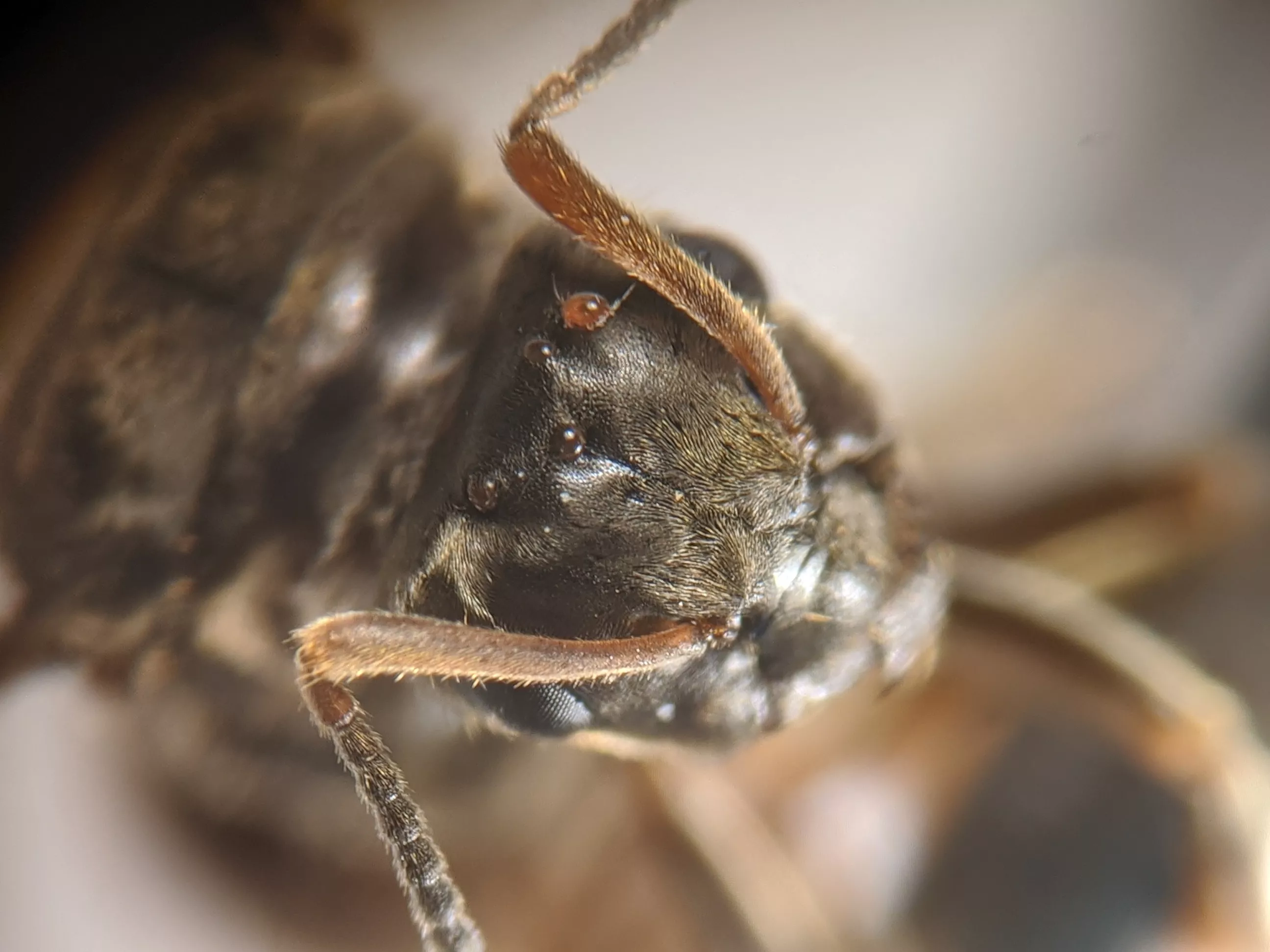Some pictures of honeybees
Honeybees
Queen bees are raised vertically in long cells:
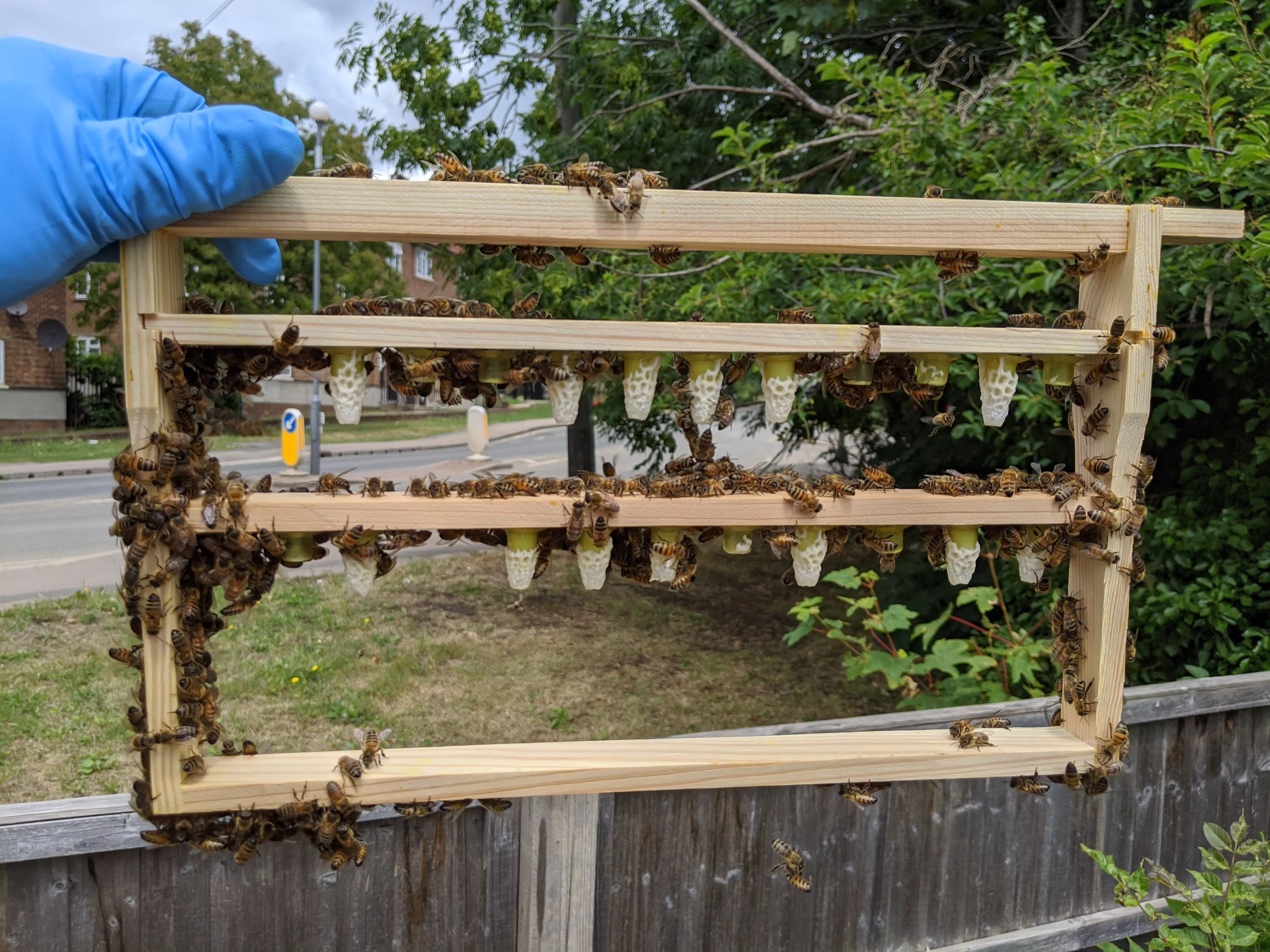
The bees face outward in their cell so they can chew their way out. This bee died in the cell. I’ve removed the side of the cell to show her in situ.
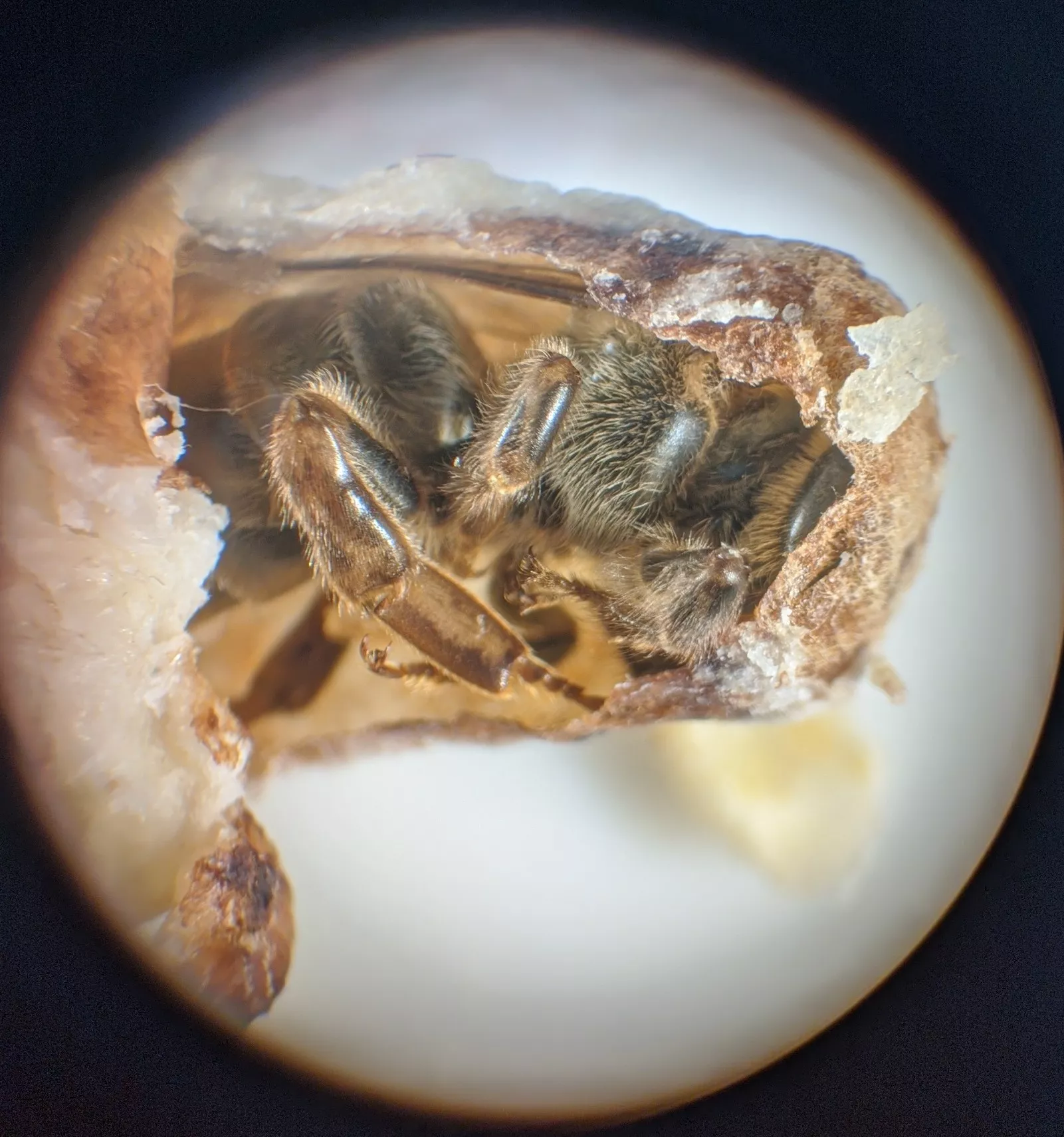
Here are a few honeybee workers chewing their way out of their cells:
If a hive has been queenless and broodless for several weeks, the ovaries of some of the workers may develop, and they may lay eggs. These are called laying workers. Here is an image of the ovaries of a laying worker. Note that the eggs start small in the tubes, and get larger as they progress down.
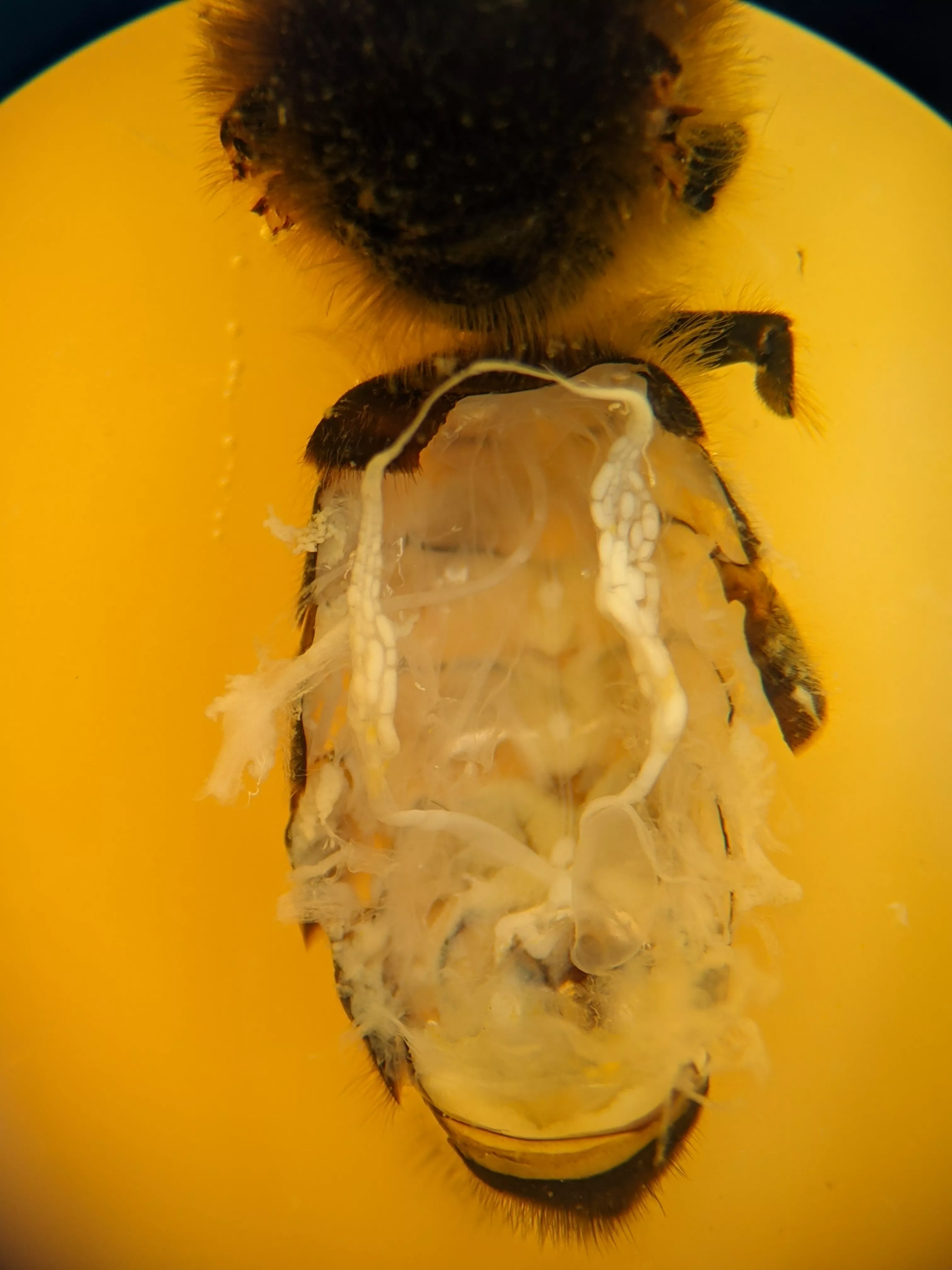
The sting of a queen is curved, which she uses to kill other queens.
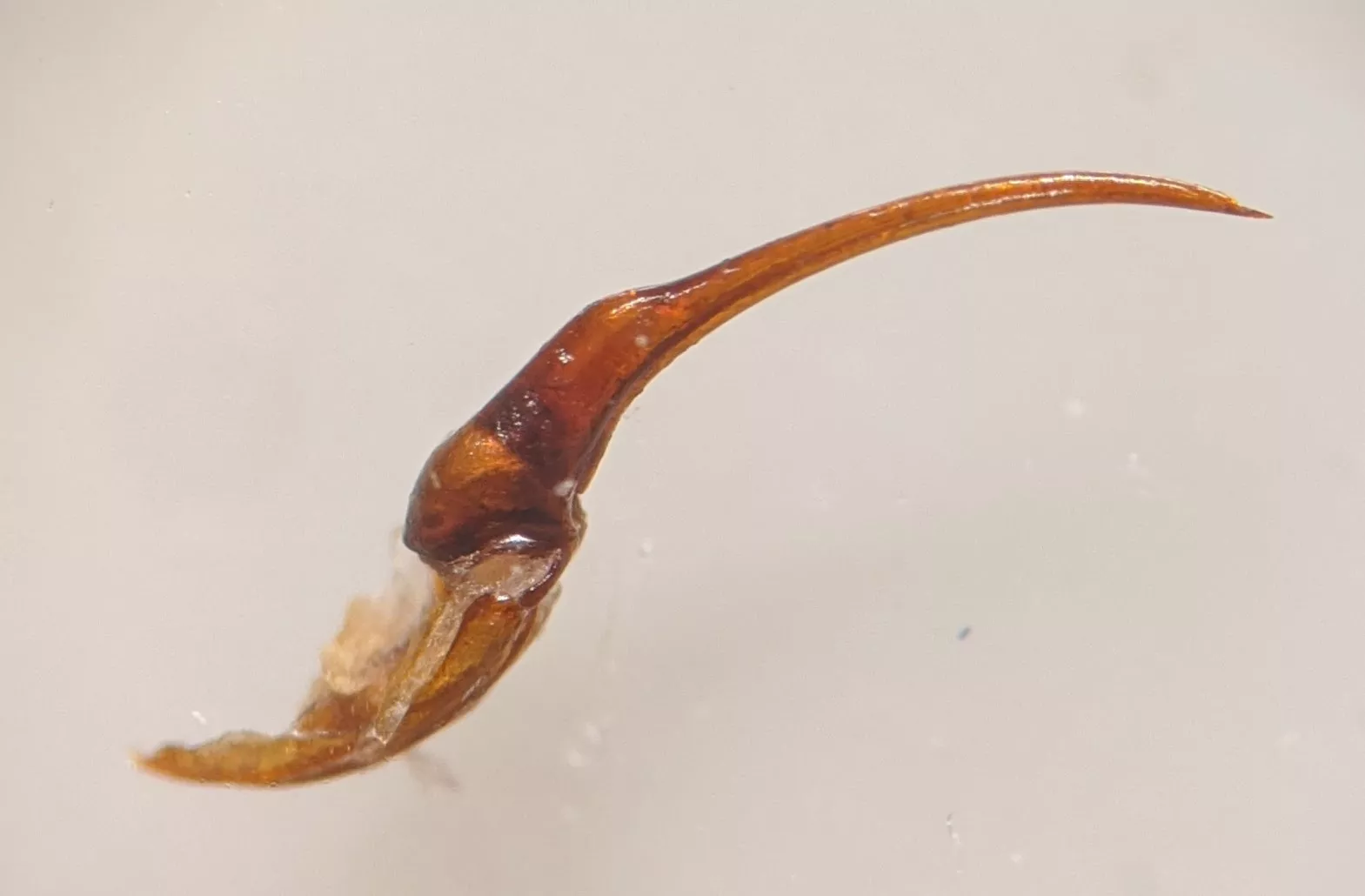
The sting of a worker is straight.
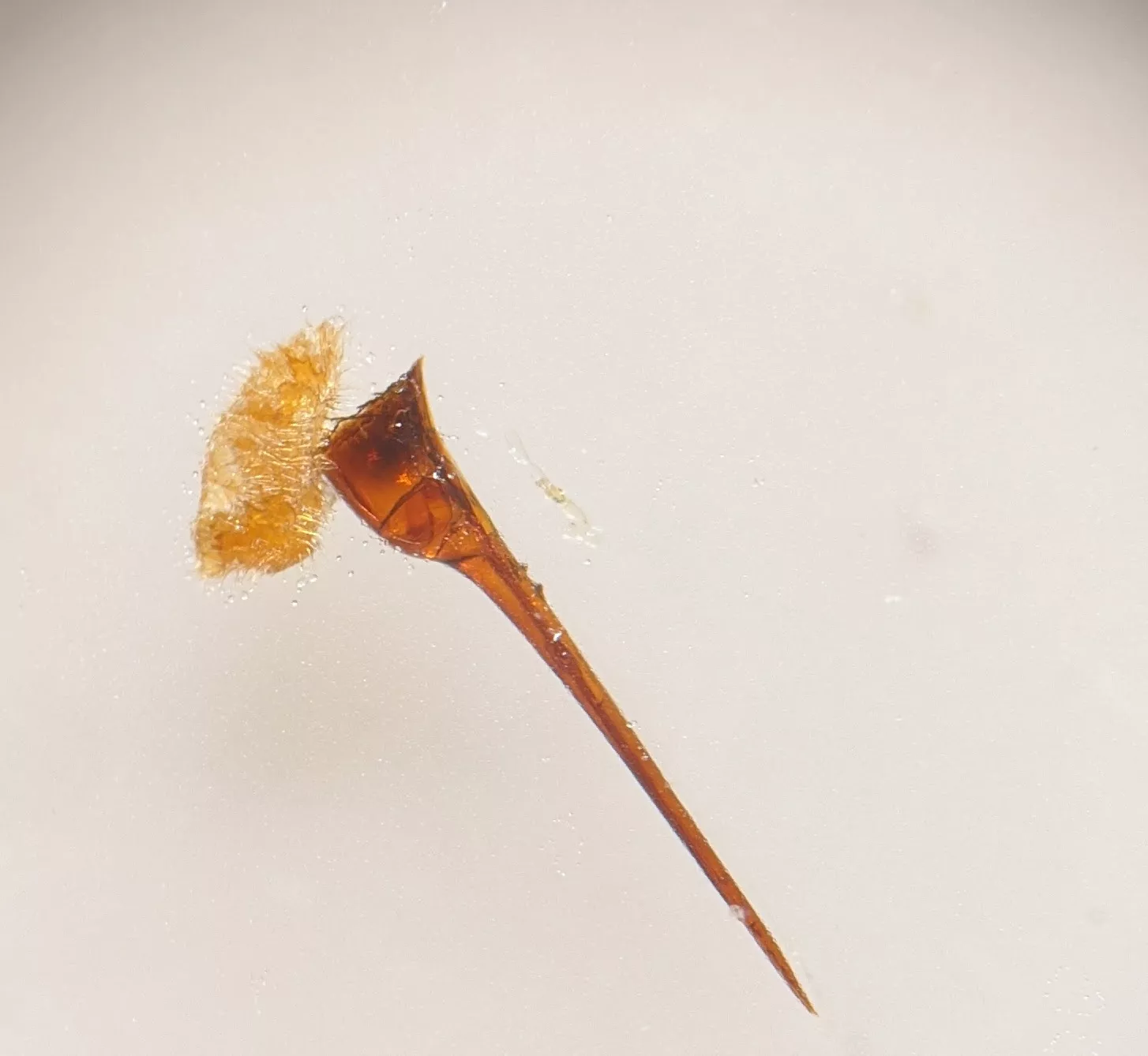
Wax moth larvae:
Wax moths cover the tops of the honeybee cells with silk
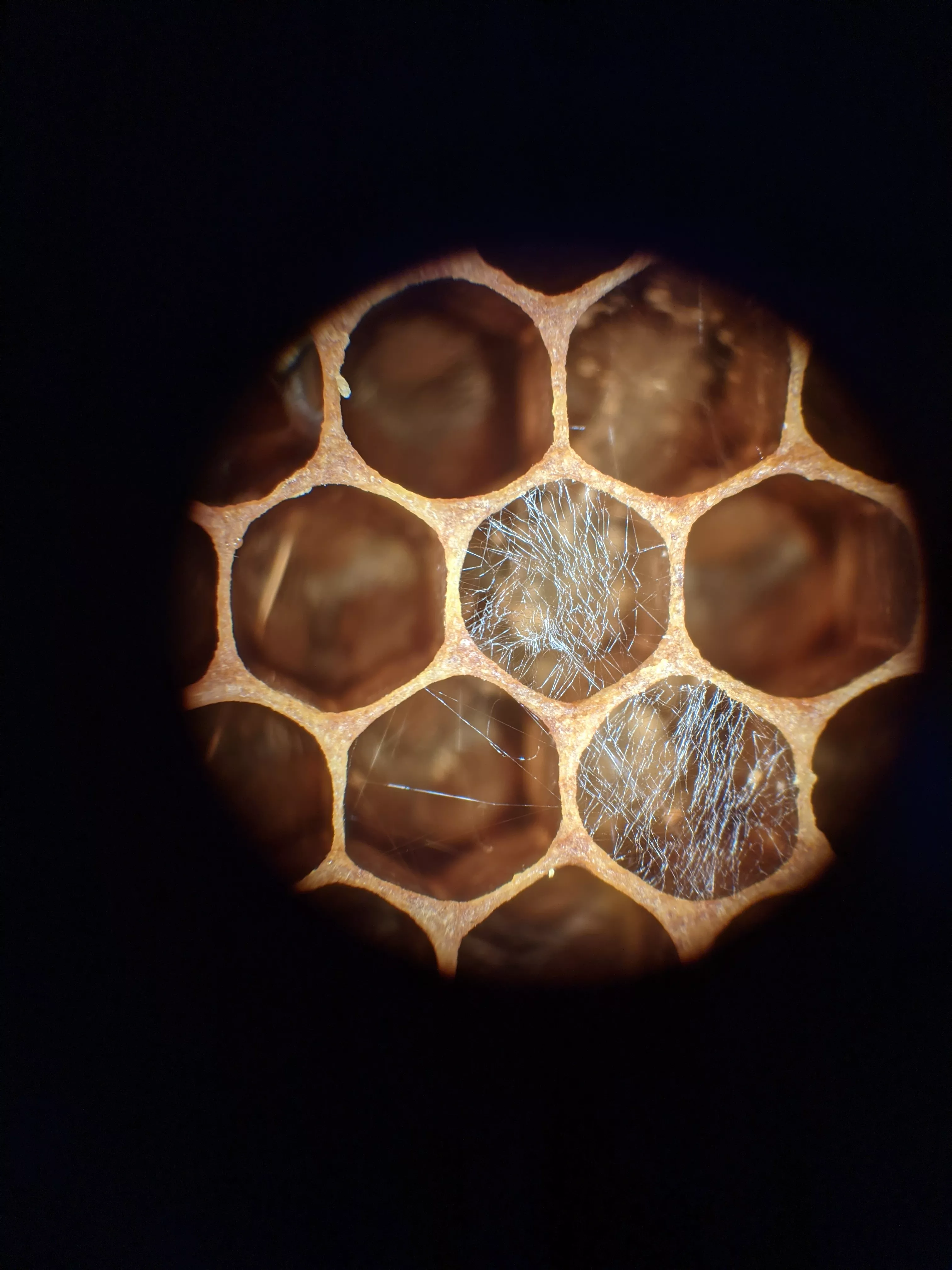
and leave behind a trail of chewed wax bits and faeces
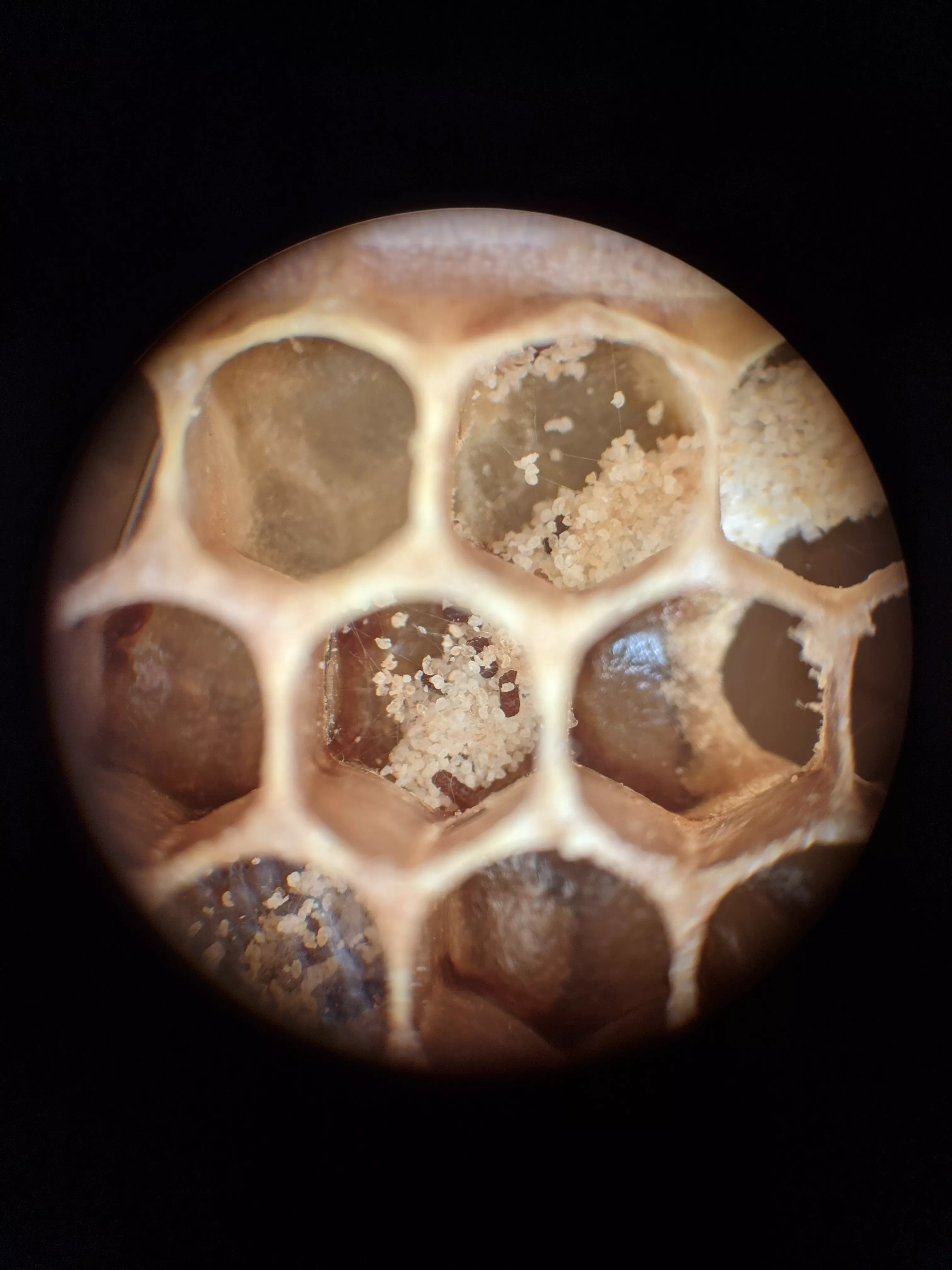
Here’s a cross section of the proventriculus of a wax moth larva. The proventriculus is a sort of valve that sits between the crop and the ventriculus (stomach).
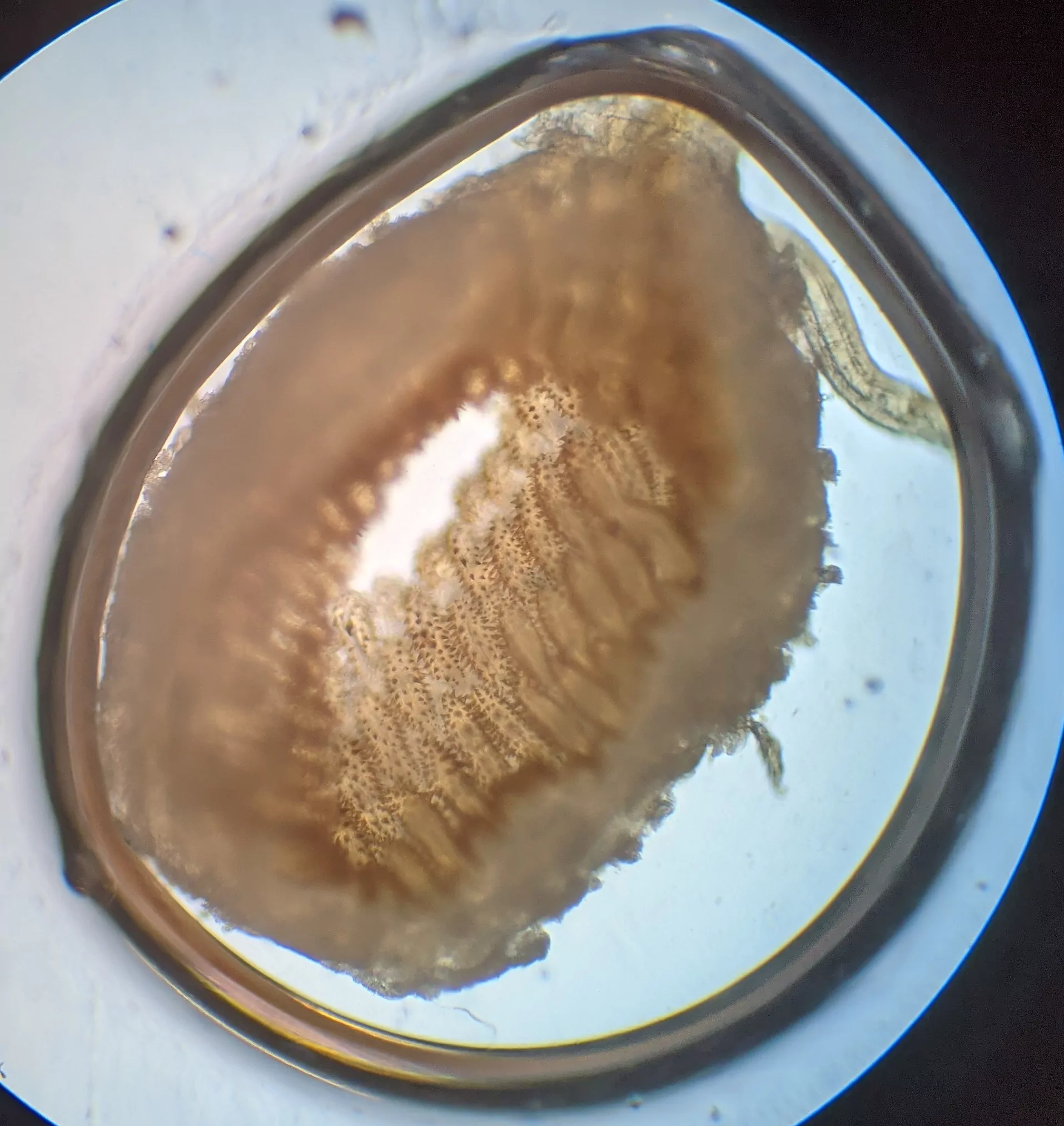
An ant with a mite
The varroa destructor mite is by far the most serious pest or disease afflicting honeybees. Here is a different type of mite attached to the head of a flying ant. Ants, like honeybees, have two large compound eyes on the sides of the head, and three small ocelli in a triangle on the top of the head.
